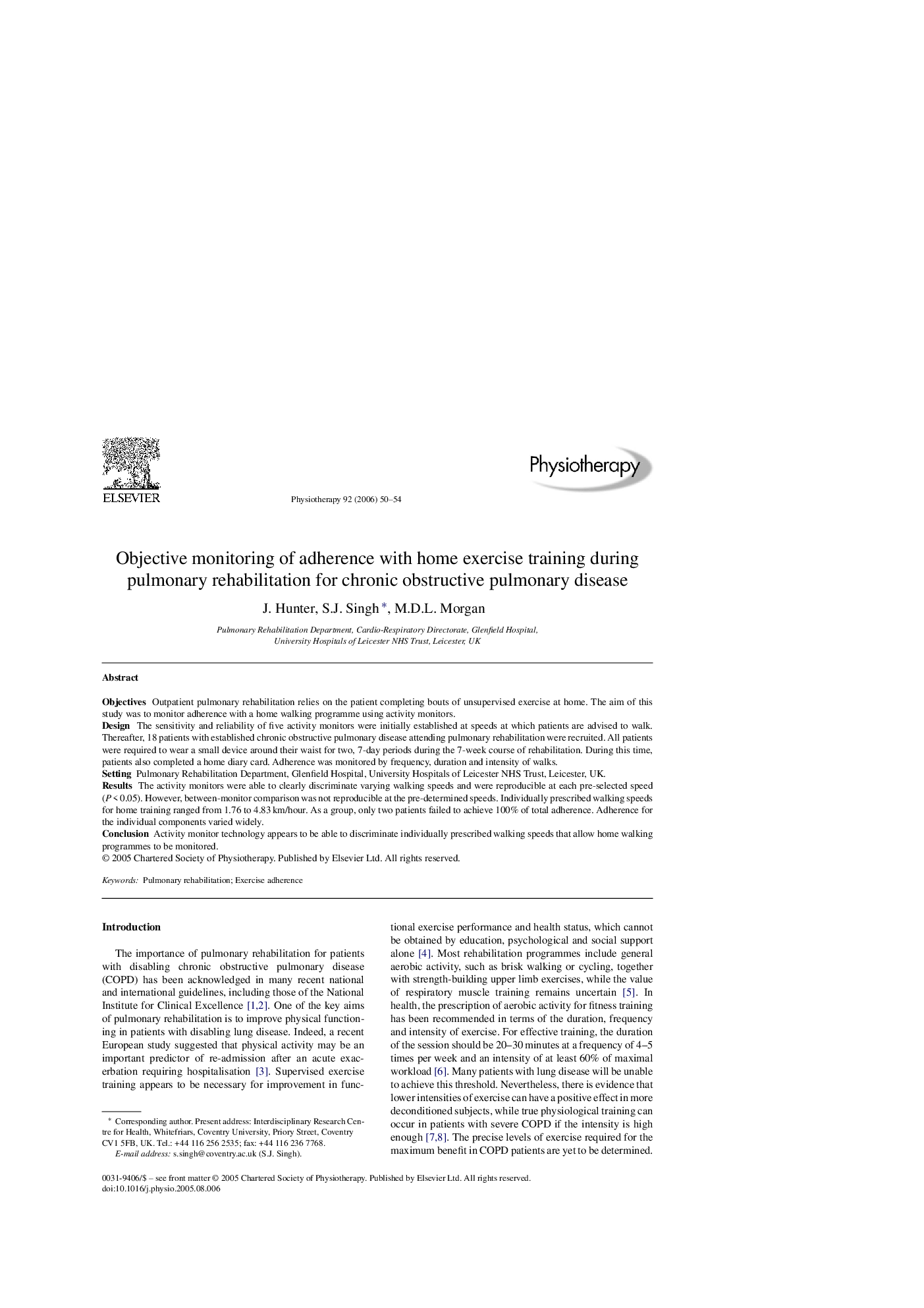| Article ID | Journal | Published Year | Pages | File Type |
|---|---|---|---|---|
| 2627855 | Physiotherapy | 2006 | 5 Pages |
ObjectivesOutpatient pulmonary rehabilitation relies on the patient completing bouts of unsupervised exercise at home. The aim of this study was to monitor adherence with a home walking programme using activity monitors.DesignThe sensitivity and reliability of five activity monitors were initially established at speeds at which patients are advised to walk. Thereafter, 18 patients with established chronic obstructive pulmonary disease attending pulmonary rehabilitation were recruited. All patients were required to wear a small device around their waist for two, 7-day periods during the 7-week course of rehabilitation. During this time, patients also completed a home diary card. Adherence was monitored by frequency, duration and intensity of walks.SettingPulmonary Rehabilitation Department, Glenfield Hospital, University Hospitals of Leicester NHS Trust, Leicester, UK.ResultsThe activity monitors were able to clearly discriminate varying walking speeds and were reproducible at each pre-selected speed (P < 0.05). However, between-monitor comparison was not reproducible at the pre-determined speeds. Individually prescribed walking speeds for home training ranged from 1.76 to 4.83 km/hour. As a group, only two patients failed to achieve 100% of total adherence. Adherence for the individual components varied widely.ConclusionActivity monitor technology appears to be able to discriminate individually prescribed walking speeds that allow home walking programmes to be monitored.
